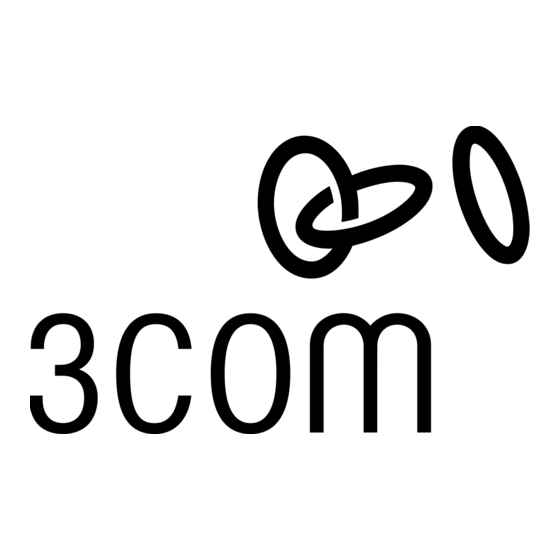3Com 8500 Ficha de datos - Página 2
Navegue en línea o descargue pdf Ficha de datos para Punto de acceso inalámbrico 3Com 8500. 3Com 8500 4 páginas. Wireless lan access point
También para 3Com 8500: Ficha de datos (4 páginas), Manual de inicio rápido (10 páginas), Manual de inicio rápido (8 páginas)

3 C O M
®
W I R E L E S S L A N A C C E S S P O I N T S 8 2 0 0 / 8 5 0 0 / 8 7 0 0 D ATA S H E E T
Freedom of
movement, freedom
of choice
Implementing the
right standard for
your wireless
network needs
2
With their flexibility and unfettered
access, wireless LANs are changing
the way people work. Now with
3Com's enterprise-class wireless
access points, you can build a cost-
effective, reliable, secure wireless
network that provides users with
seamless connectivity to the Internet,
company intranet, and the wired
corporate network from anywhere
they happen to be—conference room,
cafeteria or office.
Understanding the characteristics of
the 802.11a and 802.11b standards
can help you make the best choice for
your wireless implementation plans.
Far-Reaching 802.11b
802.11b operates in the 2.4 GHz band
at 11 Mbps. Ratified in 1999, it's the
most widely deployed protocol in the
market today due to the Wi-Fi
Alliance's successful certification efforts
that have ensured interoperability. It
supports the widest coverage—up to
100 meters (328 feet). However, 802.11b
is slower than 802.11a and it is subject
to a greater risk of radio interference
because it operates in the more popular
2.4 GHz band.
Consider 802.11b when you need
wider coverage and vendor compati-
bility and you are
• Implementing a complete wireless
LAN solution, including bridges,
gateways, access points and clients;
Wi-Fi certification guarantees com-
patibility among vendors
• Managing a tight budget; 802.11b is
extremely price competitive with a
wide range of vendors and price
points
• Providing access to hot spots in
public spaces such as coffee shops
or university cafeterias
• Running applications that don't
require high bandwidth
3Com's dual-mode design supports
both 802.11a and 802.11b wireless
standards on a single access point.
This capability increases configuration
and coverage flexibility and protects
your network investment for both
existing and emerging wireless stan-
dards. Industry-leading security
features and comprehensive manage-
ment and performance features
combine to make these enterprise-
class wireless access points an ideal
choice for organizations ready to serve
their increasingly mobile workforce.
High-Performance 802.11a
Ratified in 2002, 802.11a is IEEE's more
recent wireless standard. It operates at
the 5 GHz band and supports data rates
at up to 54 Mbps. For those organiza-
tions demanding even higher speeds, a
"turbo mode" feature can boost
throughput rates up to 108 Mbps. And
because there are fewer devices in the
5 GHz band, there's less potential for
RF interference. However, because it is
at an entirely different radio spectrum,
it is not compatible with 802.11b.
The higher spectrum provides about
50 meters (164 feet) of coverage—about
half what 802.11b offers.
Consider 802.11a when you need high
throughput in a confined space and
you are
• Running high-bandwidth applica-
tions like voice, video, or
multimedia over a wireless network
that can benefit from a fivefold
increase in data throughput
• Transferring large files like com-
puter aided design files, preprint
publishing documents or graphics
files, such as MRI scans for medical
applications, that demand additional
bandwidth
• Supporting a dense user base
confined to a small coverage area.
Because 802.11a has a greater
number of non-overlapping
channels, you can pack more access
points in a tighter space
